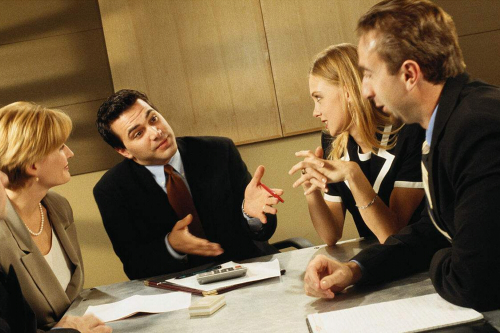Adjust Body Position
Parents frequently advise their children about how to stand and sit, particularly when they are in formal settings such as school, church, or dinner parties. The command “Sit up!” is often accompanied by “And pay attention!” Here the parent is teaching the child another widely held belief – one’s body position indicates whether or not one is paying attention to the other party. To ensure that others know you are attentive to them, hold your body erect, lean slightly forward, and face the other person directly. If you accept and endorse the others’ message, care needs to be taken not to show disrespect with body position by slouching, turning away, or placing feet on the table. In contrast, crossing arms, bowing the head, furrowing the brow, and squeezing eyebrows together all can signal strong rejection or disapproval of the message.

Nonverbally Encourage or Discourage What the Other Says
One can indicate attention and interest in what another is saying through a variety of simple behaviors. A head nod, a simple hand gesture to go on, or a murmured “unh hunh” to indicate understanding all tell the other person to continue, that you are listening. In fact, you can encourage someone to continue to speak about many subjects by simply nodding your head as he or she is speaking. Brief eye contact or a smile and a nod of the head will both provide encouraging cues. Similarly, a frown, a scowl, a shake of the head, or a grab of one’s chest in mock pain will signal disapproval of the other’s message.
Nonverbal communication – done well – may help negotiators achieve better outcomes through mutual coordination. One study compared the development of rapport between negotiators who did or did not have visual access to each other while negotiating. The researchers defined rapport as “a state of mutual positivity and interest that arises through the convergence of nonverbal expressive behavior in an interaction”. They found that face-to-face interaction stimulated rapport through nonverbal communication, which in turn enhanced coordination and led to higher joint gains. Of course, these benefits will presumably arise only to the extent that parties are able to interpret nonverbal communication accurately.








